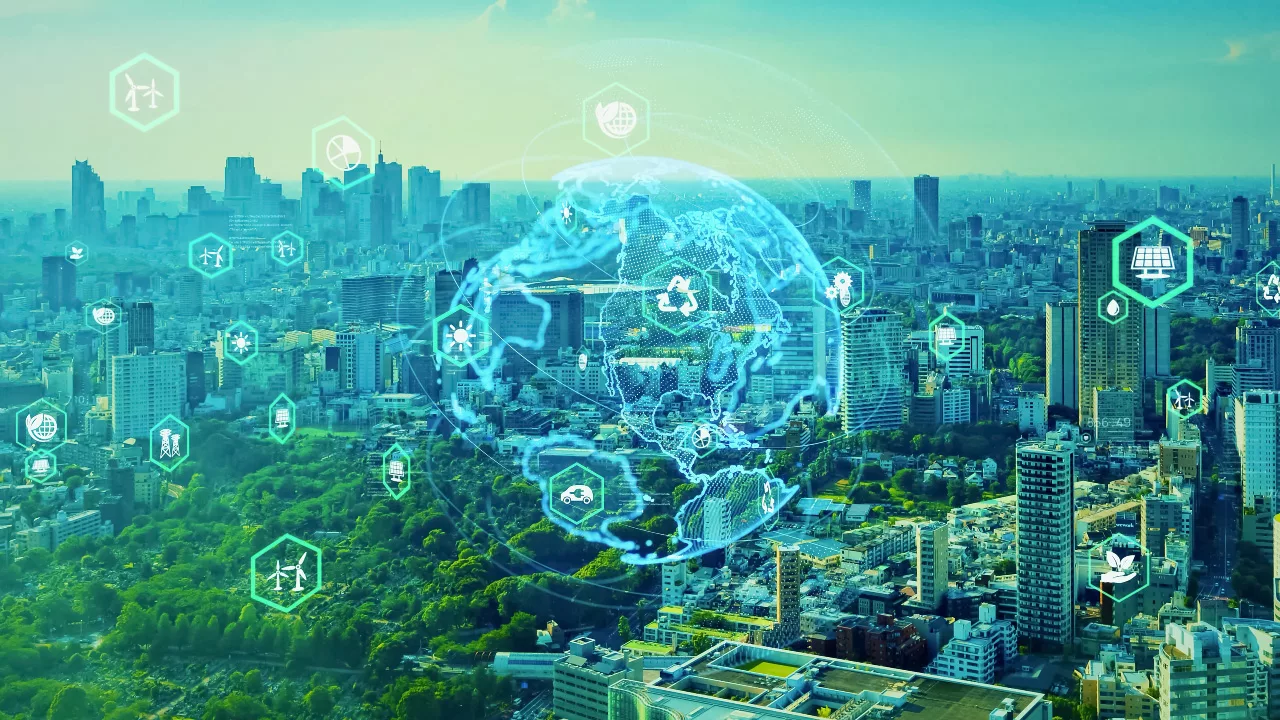Blogs
How Smart Washroom Technology is Reducing Future Environmental Impact

In today’s world, almost every aspect of our lives is being reimagined or redesigned to minimise its future impact on the environment.
From the products we buy and the food we eat, through to the buildings we occupy and the cities we live in, innovation is facilitating a transition towards a more sustainable tomorrow.
At the heart of this innovation lies Smart technology, which offers a tangible step that both organisations and individuals can take today, to create a cleaner, greener world for generations to come.
In this article, we focus on Smart washroom technology and explore ways in which the uptake of cutting-edge tech is not only conserving resources but is setting new standards for environmental stewardship.
Sustainable practices in everyday life
Technology has allowed all of us, in one way or another, to move closer to a more sustainable future.
At home, our appliances now have built-in Smart technology, making them more energy-efficient than ever before. The food we eat is increasingly produced via sustainable farming practices, incorporating technology to reduce the environmental impact of food production.
On our roads, gas-powered cars are being replaced by electric vehicles, eliminating exhaust emissions and with the potential to be powered by renewable energy sources. And in our towns and cities, future developments prioritise energy efficient design with built-in Smart technology to ensure sustainability is future proofed.
Smart washroom technology
As we move towards a more sustainable way of life, one area that has undergone a significant transformation is the washroom.
So-called ecofriendly bathrooms, featuring Smart washroom technology, are spaces within which almost every touchpoint can support our quest for sustainability. With integrated innovative products and systems, Smart washrooms are revolutionising how we manage our resources by monitoring water and energy use.
Some of the most sustainable washroom products and Smart technology solutions, which allow businesses to create truly sustainable environments, are detailed below.
Waterless urinals
Traditional flush urinals use substantial amounts of water. In busy commercial spaces, they can be responsible for over 40% of all water consumption. With the introduction of waterless urinals, which eliminate the need for flushing thanks to an advanced design and odour-control system, these eco-friendly toilets save thousands of gallons of water annually, helping businesses make a significant impact on future water use.
Smart sensors
Fitting sensors to taps, toilets and faucets greatly reduces water wastage. By only activating flow when needed, simple detection systems ensure water is used efficiently. For example, sensors on taps can detect hand movements, preventing them from running unnecessarily. This not only reduces water waste but prevents overspills and future maintenance from overused appliances.
Leak detection systems
Leaks in washroom plumbing systems can lead to significant water loss and can damage property over time. Smart leak detection systems use advanced technology to monitor pipes and fixtures for leaks, immediately alerting maintenance teams to any issues before they escalate. By addressing leaks promptly, leak detection systems are an integral part of sustainable water use, by preventing water wastage, reducing the risk of structural damage, and preventing costly repairs.
Consumable monitoring
By equipping dispensers with sensors, levels of consumables such as soap and paper towels can be continuously and accurately monitored. Alerts are sent to cleaning teams when supplies are running low, ensuring they are only restocked when necessary, reducing waste and preventing overstocking. Automated dispensers can also help control the amount of product that is dispensed, minimising excessive use and promoting more sustainable consumption.
Air quality sensors
Air quality is not only important in maintaining a healthy and comfortable washroom environment, but it also contributes significantly to sustainability. Sensors can monitor temperature and levels of humidity, carbon dioxide, and volatile organic compounds (VOCs), adjusting ventilation accordingly. By optimising airflow based on real-time data, and ensuring the most energy-efficient settings are maintained, air quality sensors help to reduce energy consumption and enhance overall efficiency of a building.
Occupancy sensors
Occupancy sensors allow FM teams to track washroom user numbers accurately, at any time of the day. This data allows optimised cleaning schedules to be developed, ensuring washrooms are attended to based on actual usage. By tailoring cleaning to real-time demand, teams can reduce the use of harmful cleaning products, water, and energy, thereby minimising environmental impact.
Smart Washrooms and Sustainability
These are just a few examples of innovative technology that can be integrated into the washroom in the pursuit of sustainability.
By adopting smart washroom technologies, commercial facilities can achieve substantial reductions in water and energy consumption, lower operational costs, improve user experience and contribute to environmental preservation.
And as technology continues to evolve, we can expect even more advanced and environmentally beneficial solutions to emerge, streamlining resource management and further strengthening the role that smart washroom technology plays in achieving sustainability.
Latest Posts
How a Sustainable Solar Panel Solution is Addressing the Environmental Burden of Solar Maintenance
While solar panels offer one of the greenest, most sustainable sources of energy, their upkeep and solar panel cleaning maintenance can be far from environmentally friendly.
Boosting Climate Resilience with Intelligent Washrooms and Facility Management Tech
As climate change continues, buildings and facility management (FM) teams are under increasing pressure to operate more sustainably.
How Smart Water Metering Systems Are Transforming Water Management in Residential Towers
Densely populated cities in the Middle East are placing a huge amount of pressure on already scarce water resources.
Smart Washroom Technology and its role in Corporate Environmental Responsibility (CER)
Sustainability is no longer a peripheral concern; it is an operational imperative for businesses.
Unlocking the Full ROI of Smart Washroom Technology
Smart washroom technology delivers far-reaching benefits that go beyond traditional expectations.
